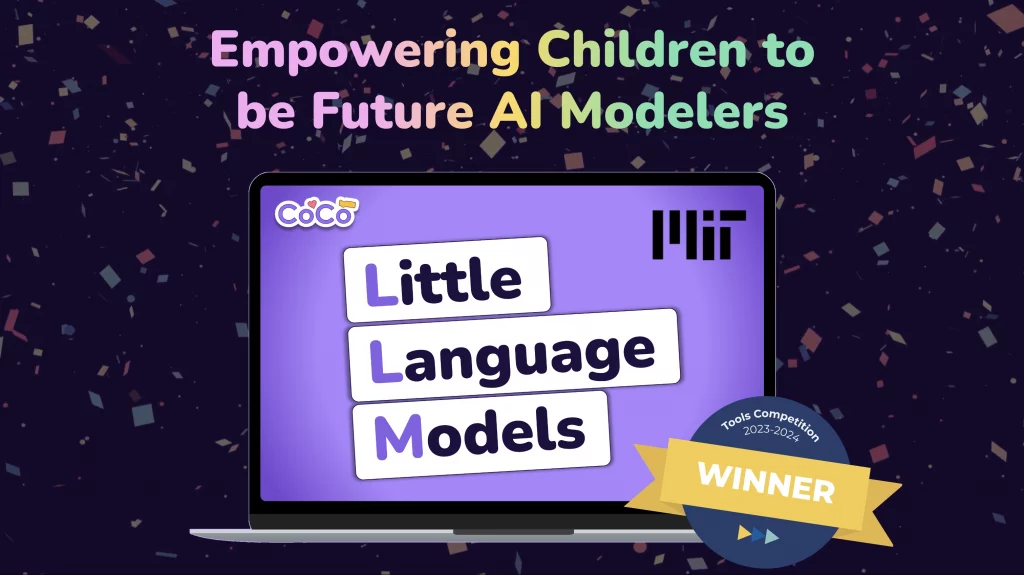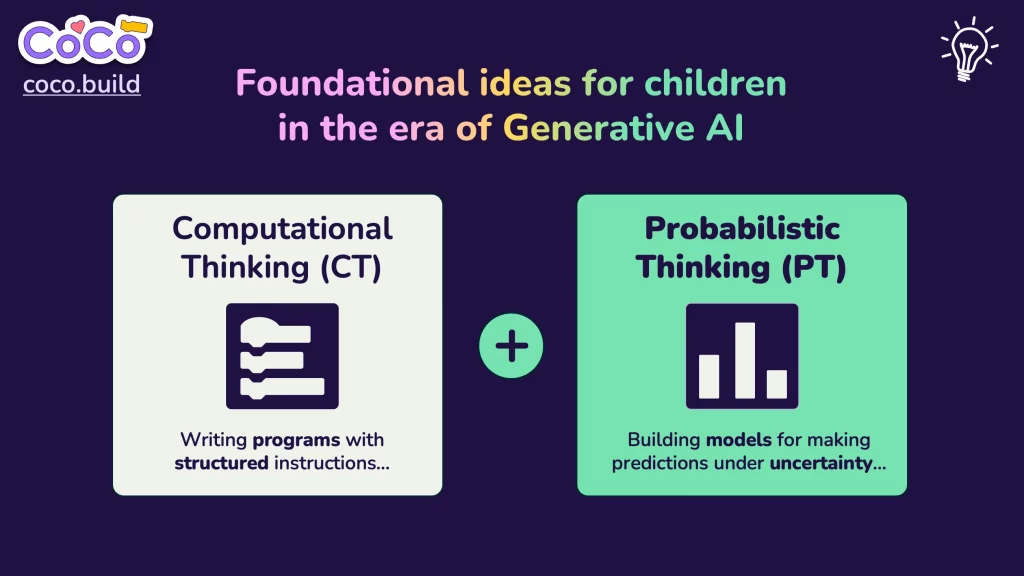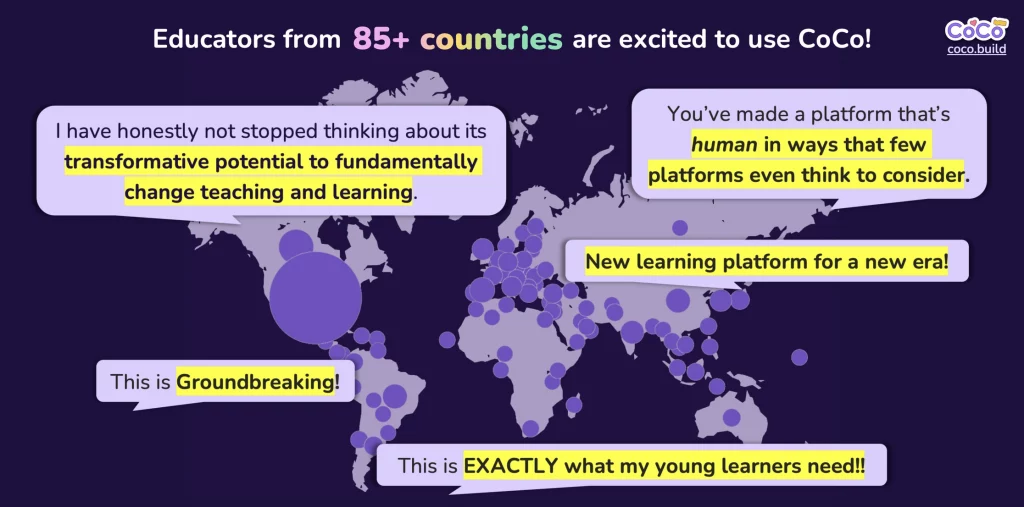Little Language Models: AI and Probabilistic Thinking in Early Education
Publication date: September 12, 2024
Little Language Models is a new, co-creative AI education microworld for children (ages 8-16), developed by MIT PhD Researchers Manuj Dhariwal and Shruti Dhariwal. It will be accessible within the CoCo platform. In their article about the work, the researchers advocate for a shift towards introducing ‘Probabilistic Thinking’ (PT) as a new foundational fluency for children in the AI era, alongside ‘Computational Thinking’ (CT).
The AI-driven future will be shaped will be shaped by the individuals who design and interact with it and not by mere users. In order to fully grasp the opportunities AI is offering us, we must move beyond just using these tools. We need to foster a deep, creative fluency with the core principles that underpin AI, such as probabilistic thinking and modelling.

What is Probabilistic Thinking and why do we Need it?
Probabilistic thinking is a mental model that helps us understand the likelihood of various outcomes, enabling us to make decisions that have a higher chance of success. In essence, it’s a decision-making approach grounded in reasoning under uncertainty and is emerging as a key skill in the age of AI, especially for the younger generations. Much like computational thinking that revolutionised how we approach problem-solving through programming, probabilistic thinking helps us understand the intelligence behind both human cognition and AI systems. This approach is particularly relevant now as AI models such as ChatGPT leverage probabilities to predict and generate responses from input data.
When you interact with ChatGPT, the model uses probabilistic calculations to determine the next word or phrase that is most likely to occur, creating responses that feel coherent and human-like. Understanding this core concept can demystify AI and make it more accessible for young learners. Today’s youth will drive the AI of tomorrow, therefore it is of uttermost importance to teach them these foundational ideas that will enable them to shape the way AI evolves.

Introducing Little Language Models: Making AI Concepts Accessible
The “Little Language Models” microworld is designed by the creators with the goal of making probabilistic thinking tangible and engaging for children. It allows young learners to explore basic concepts of AI models through playful, creative, and meaningful experiences. The tool provides customisable probabilistic blocks and manipulatives that enable children to create their own little models with their own little data. For example, they can develop models for generative art, storytelling or music, create adaptive multiplayer games or design interactive visualisations that use real-time data from their peers. More advanced projects also include work with Markov blocks, as for example teaching a computer to learn how to draw. The possibilities are limitless. Playing with these models enables children to experiment with probability distributions, sequence training and bias exploration. In essence, children are building knowledge and understanding of key concepts like probability, multimodal AI capabilities, and the impact of training data on model outputs.
Apart from this, children also learn about context length, a crucial aspect of models like ChatGPT, and how even basic understanding of this concept can improve the quality of generated outputs. By engaging with these ideas in a hands-on, exploratory manner, children develop a more nuanced understanding of AI and start seeing it as a set of manipulable, rather than mystifying processes.
The main idea around which The Little Language Models concept is centred lies within the fact that abstract AI can become more approachable when grounded in familiar objects. For instance, the platform uses customisable digital dice as a metaphor for probabilistic modelling. Unlike traditional dice with fixed numbers, these digital dice can be personalised with any data set, allowing children to imagine and create their own models. This approach makes the concept of modelling concrete and intuitive, empowering children to see themselves as modellers and creators, rather than passive consumers of AI technologies.
Intrigued by this description? Watch a short 1-minute video here introducing the Little Language Models.

Towards a New Vision for AI in Education: Intelligetics
In order to better equip children for a world where AI is on the rise, the creators of the Little Language Models envision a new interdisciplinary field called “Intelligetics,” which integrates insights from computer science, cognitive science, neuroscience and other fields to provide a comprehensive study of human and artificial intelligence. Intelligetics would equip learners with the skills to understand and shape AI technologies, fostering a generation of “Intelligicians” who can navigate and innovate within this evolving landscape.
The Little Language Models initiative is a small but significant step towards this vision. Using a co-creative environment where children can actively engage in building and experimenting with AI concepts, they can see themselves as future AI builders and scientists. This approach aligns with the constructionist paradigm of learning by doing, encouraging children to actively participate in the creation of AI.
It is of uttermost importance to empower the next generation to not just use AI but to understand and shape it. The Little Language Models initiative offers a groundbreaking approach, making AI concepts accessible, tangible, and engaging for young learners. The journey starts here and now, with playful exploration, creative experimentation, and a commitment to nurturing young minds as the architects of tomorrow’s AI landscape.
For more information on the CoCo platform, read our previous blog post – “CoCo – a new collaborative coding platform for young people“.
Follow CoCo on LinkedIn, X (Twitter), and YouTube for more updates.


